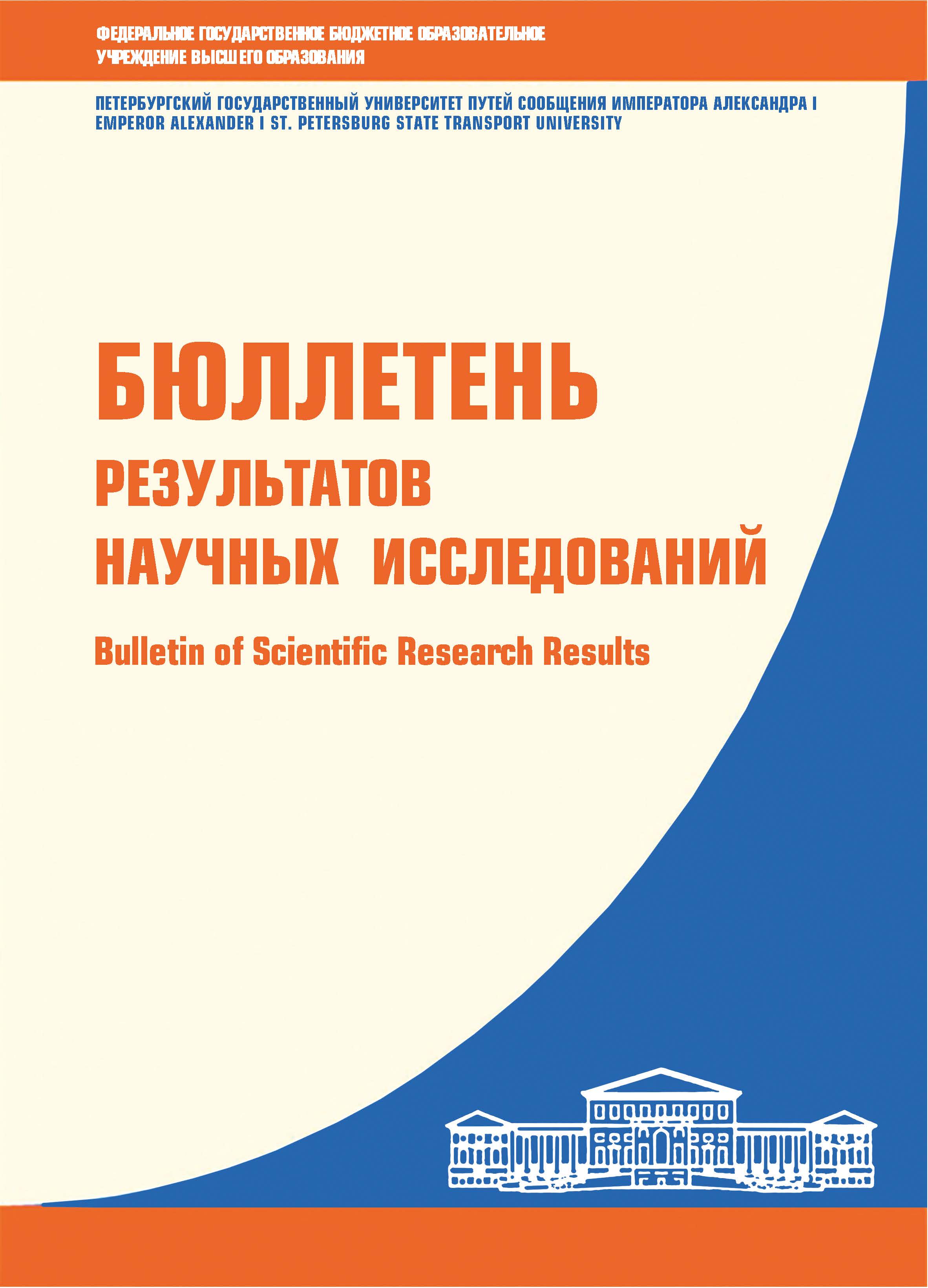Russian Federation
Russian Federation
UDC 629.4.07
Objective: improving algorithms for protection against skidding and slipping using new methods for detecting excessive slipping of locomotive wheel pairs, allowing for early detection of the moment of loss of adhesion. Methods: the effectiveness of an anti-skid system is largely determined by the reliable detection of the occurrence of excessive wheel slip. Solving this problem requires the development of methods for isolating signals from the angular velocity of rotation and angular acceleration of the wheelset, taking into account dynamic processes in the mechanical part of the locomotive and interference in the measurement channel. Therefore, the article discusses the issues of processing rotation speed signals, extracting information about the amount of excess slip and angular acceleration of the wheelsets for use in anti-skid and skidding systems. One of the criteria that can improve the reliability of skid detection is proposed to use the “Estimated time before wheel locking”. Its value allows you to define the estimated time before the wheel jams (stops rotation). The introduction of this criterion makes it possible to more accurately determine the risk of a complete stop of wheelset rotation and increases the reliability of determining the occurrence of skidding. Results: it has been established that to eliminate errors in the measurement channel and isolate the signal about the angular acceleration of the wheelset in conditions of the presence of oscillations caused by the presence of the effects of the spatial dynamics of the locomotive, it is advisable to use a discrete Kalman filter. Signal processing using a Kalman filter in the presence of a reference signal makes it possible to significantly reduce the influence of spatial vibrations of the undercarriage of an electric locomotive when moving along a track with irregularities on the extracted signals of the angular velocity of rotation and angular acceleration of the wheelset. This makes it possible to reduce response thresholds and identify skidding and skidding before significant excess slip occurs. Practical importance: the necessity of using complex criteria based on the analysis of not only the slipping speed of wheelsets, but also angular accelerations, is shown to identify excessive slipping of locomotive wheelsets. Their use in the locomotive control system makes it possible to detect loss of adhesion in the early stages of slipping and skidding and improve the use of the adhesion weight of locomotives
anti-skid protection, train-track interaction, wheel — rail adhesion, wheelsets sliding, skid detection algorithm
1. Protivoyuznye ustroystva podvizhnogo sostava / M. D. Fokin, A. A. Loskutov, A. K. Vtorov. M.: Transport, 1970. 102 s.
2. Obobschenie peredovogo opyta tyazhelovesnogo dvizheniya: voprosy vzaimodeystviya kolesa i rel'sa / U. D. Harris; pod obsch. red. S. M. Zaharova, V. M. Bogdanova; per. s angl. S. M. Zaharova, S. S. Karceva, V. L. Mel'nikova i dr. M.: Intekst, 2002. 408 s.
3. Obobschenie mirovogo opyta tyazhelovesnogo dvizheniya. Upravlenie soderzhaniem sistemy koleso — rel's: sb. nauch. tr. / pod obsch. red. S. M. Zaharova. M.: VNIIZhT, 2017. 420 s.
4. Asinhronnyy tyagovyy privod lokomotivov: uchebnoe posobie / A. A. Zarif'yan; pod obsch. red. A. A. Zarif'yana. M.: FGBOU «Uchebno-metodicheskiy centr po obrazovaniyu na zheleznodorozhnom transporte», 2013. 414 s.
5. Hasegawa I., Kayashima K. Brake Technology for 140 km/h Operation of Narrow — Gauge Lines // RTRI Report. 1999. Vol. 13, no. 10. P. 35–40.
6. Nakazawa S.-I. Development of a New Wheel Slide Protection System Using a New Detection Algorithm // Quarterly Report of RTRI. 2011. Aug. Vol. 52, no. 3. P. 136–140.
7. Kulikova M. V., Kulikov G. Yu. Chislennye metody nelineynoy fil'tracii dlya obrabotki signalov i izmereniy // Vychislitel'nye tehnologii. 2016. T. 21, № 4. S. 64–98.
8. Mal K., Hussain I., Chowdhry B. S., et. al. Extended Kalman filter for estimation of contact forces at wheel-rail interface // 3C Tecnologsha. Glosas de innovacion aplicadas a la pyme. Edicion Especia. 2020. Apr. P. 279–301.
9. Wang S., Xiao J., Huang J., et. al. Locomotive wheel slip detection based on multi-rate state identification of motor load torque // Journal of the Franklin Institute. 2016. Vol. 353, no. 2. P. 521– 540. URL: https://www.sciencedirect.com/science/article/pii/S0016003215004287.
10. Alshawi A. An Adaptive Unscented Kalman Filter for the Estimation of the Vehicle Velocity Components, Slip Angles, and Slip Ratios in Extreme Driving Manoeuvres // Sensors. 2024. Jan. Vol. 24, no. 2. P. 436.
11. Kong J., Pfeiffer M., Schildbach G., et. al. Kinematic and dynamic vehicle models for autonomous driving control design // 2015 IEEE Intelligent Vehicles Symposium (IV). 06/2015. P. 1094–1099.
12. Mei T., Hussain I. Detection of wheel-rail conditions for improved traction control // IET Conference on Railway Traction Systems (RTS 2010). 04/2010. P. 1–6.
13. Maridor J., Markovic M., Perriard Y. Kalman filter to measure position and speed of a linear actuator // 2011 IEEE International Electric Machines & Drives Conference (IEMDC). 05/2011.
14. Simon D. Fundamentals of Kalman Filters. Hoboken, New Jersey: John Wiley & Sons, Inc., 2006. XXVI, 502 p.
15. Universal'nyy mehanizm. Oficial'nyy sayt / D. Yu. Pogorelov. OOO «Vychislitel'naya mehanika». Ver. 9.1. 2024. URL: www.umlab.ru (data obrascheniya: 25.03.2014).
16. Pogorelov D. Simulation of Rail Vehicle Dynamics with Universal Mechanism Software // Rail Vehicle Dynamics and Associated Problems. Gliwice: Silesian University of Technology, 01/2005. P. 13–58.
17. Mashinistu ob elektrovoze ChS7 / I. I. Karasev, L. P. Ratomskiy. M.: Transport, 2012. 223 s.









